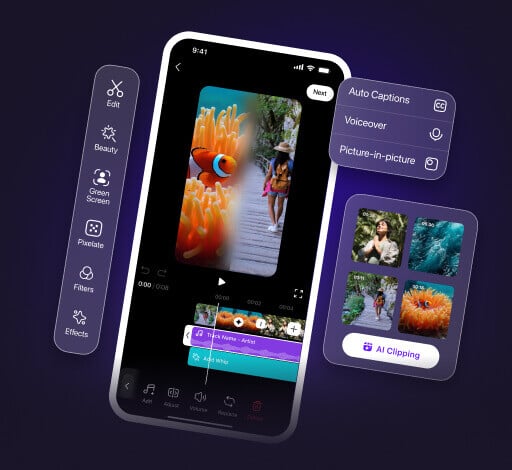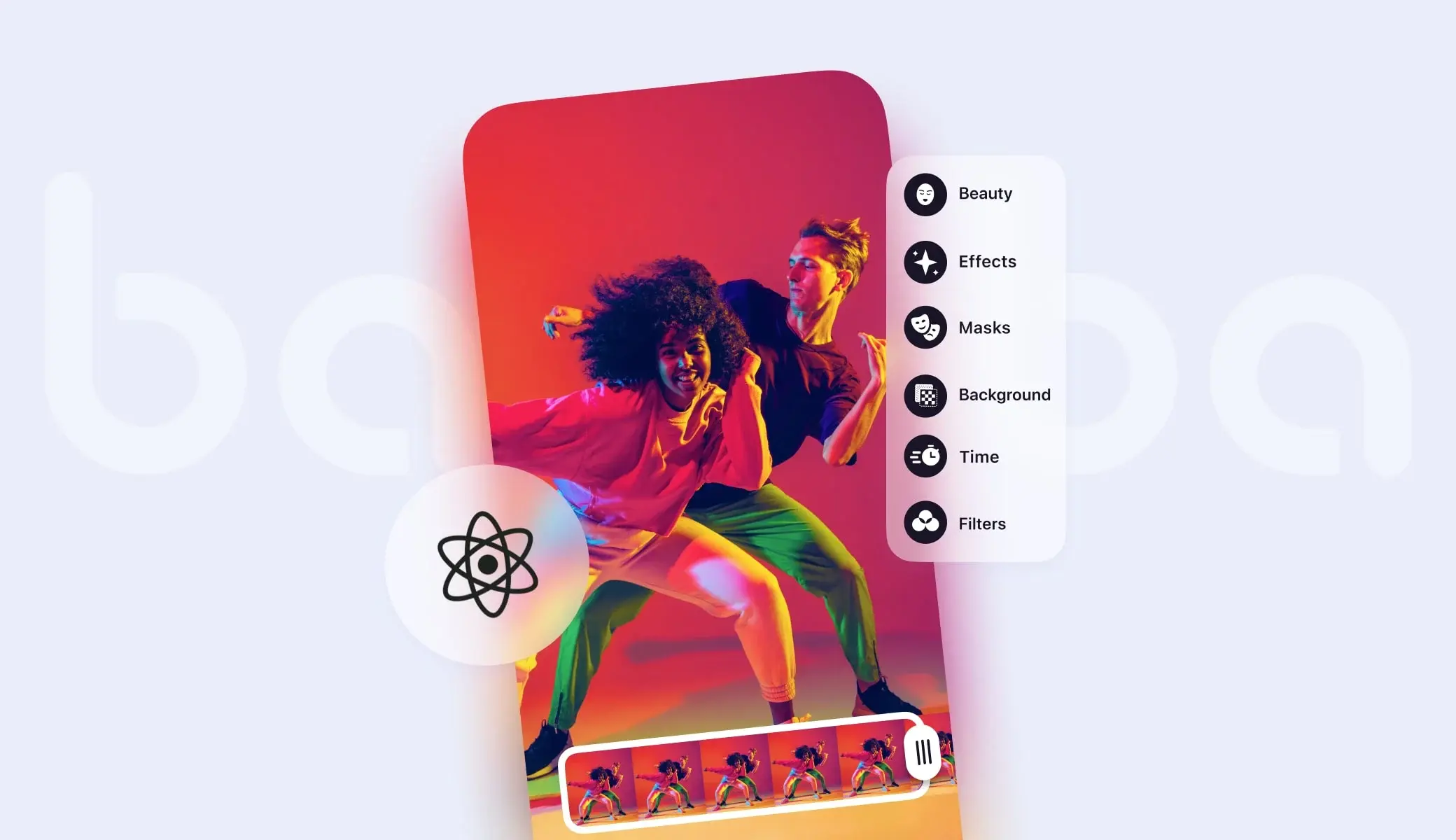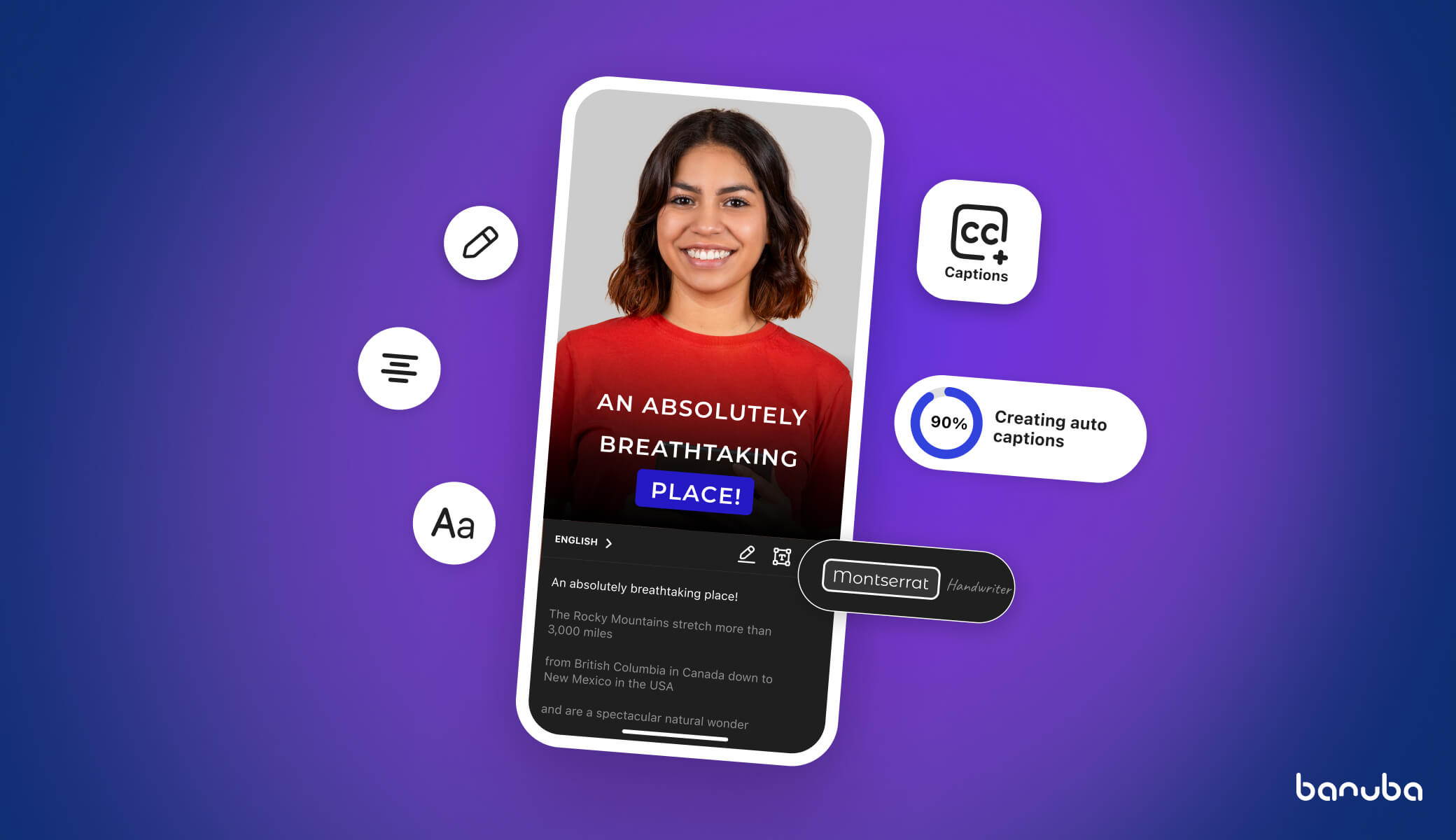[navigation]
Beauty App Filters In a Nutshell
Beauty AR is an umbrella term for all effects that aren’t flashy and obvious like AR masks but subtly make people look better on camera. It can include the following filters:
- Skin smoothing. Removing wrinkles and evening-out the skin tone.
- Teeth whitening.
- Acne removal.
- Eye bag removal.
- Face morphing. Adjusting the size and shape of the face and its features to make the person more attractive.
- Expressive eyes. Adds glare that makes the eyes look more emotional.
- Virtual makeup. Applying AR effects that mimic real cosmetic products. Check out this article for details.
Put together, AI beauty effects can provide the value of an entire makeup crew in one convenient application.
Video Editor with Face Filters by Banuba
Beauty Video Editor Use Cases
There are certain situations where the use of video editor retouch is most common.
- Social media. TikTok rules, the rest of them are trying to catch up. If you want your app to be successful in a highly competitive environment, you should provide ways to easily create quality content.
- eCommerce. Using videos for user training, ads, or reviews is the new norm. Beautification allows producing more content in less time and improves the quality of it to boot.
- Dating apps. Apps like Loko and Lolly are examples of effective use of video messaging in their niche. The use of this functionality rises because it helps both users and developers.
- Virtual try-on. Helping people look better with your product will increase sales.
This doesn’t mean that beauty filters can’t be applied in other niches. As with any tool, the limit of its use is your imagination. For example, the developers of FaceYoga (a face building app) integrated beautification to show the projected training results and attract more users.

Key Benefits of a Video Editor with Face Filters
The main benefit of a video editor with face filters is improved user experience. People won’t have to spend time editing out every minor skin imperfection - the app will do it for them. However, this brings a group of other benefits in tow.
One such advantage is incentivizing users to create. The easier it is to create cool clips, the more people will do so. Apps with social network elements (e.g. short video and karaoke apps) will benefit from the increased amount of user-generated content.
Another is increasing engagement. It’s well known that AR features work wonders for this metric. Beautification takes this a step further by helping users feel more comfortable with being on camera. This is especially meaningful for teens and young adults who are often insecure about their looks. Help them and you will help yourself.
Finally, there is a matter of increased sales. Since the pandemic began, many beauty brands turned to virtual try-on as a way to let their customers test and buy their products. This showed that orders made in this way are three times more likely to be completed and are about 20% higher.
This is not reserved just for big names like Sephora, Ulta, or Benefit, as the technology is affordable to mid-sized companies as well. Check out how Looke, a niche brand from Indonesia, successfully launched its own AR try-on app with beauty filters.
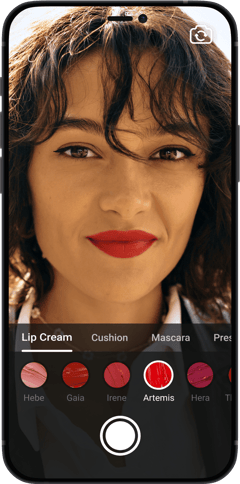 Makeup try-on from Looke
Makeup try-on from Looke
How to Add Beauty Filters to Video Editing Apps
AI beauty is a rather complicated technology. Building it from scratch could take months or even years. And that’s assuming you can put together a team that knows neural networks, computer vision, and machine learning - the underlying basis.
So in most cases, it is much more cost-effective to purchase an existing AR SDK - a premade set of modules that can be quickly integrated into your app to perform the necessary functions.
As we are most familiar with Banuba Video Editor (VE) SDK and Face AR SDK, we will use them for this article. Besides the beautification, you will be able to use the core video editing features (trimming, merging, soundtrack editing, etc.), AR masks, LUTs (“Instagram filters”), and other complementary features.

Technical requirements
This is what you’ll need to turn your app into a beauty video editor:
Android:
- The latest Banuba VE and Face AR SDK releases
- Java 1.8+
- Kotlin 1.4+
- Android Studio 4+
- Android OS 6.0 or higher with Camera 2 API
- OpenGL ES 3.0 (3.1 for Neural networks on GPU)
iOS:
- The latest Banuba VE and Face AR SDK releases
- iPhone devices 6+
- Swift 5+
- Xcode 13.0+
- iOS 12.0+.
Note that both SDKs are needed to properly use beauty filters in your app. Combined, they will take 80.5 MBs of space on Android and 42 MBs on iOS. The beauty effects are tiny except for makeup that can reach 10 MBs. However, you can adapt to this by using AR cloud - web-based storage for effects. They can be downloaded whenever a person needs them so that the users won’t be scared of the large app size. AR cloud applies to makeup effects, as well as other filters (masks, backgrounds, etc.).
To get the releases, just send us a message through a contact form.

How to Integrate Filters into a Video Editing App
The instructions below will give you everything you need to know about getting video editing and beauty effects. No additional work will be required.
Native iOS:
The step-by-step instruction and code samples can be found on our GitHub page. There you will also see the list of dependencies, technical details, customization options, etc. We also have an FAQ, that will answer any questions you may have.
Native Android:
To get beauty filters on Android, go to the relevant GitHub page. As with iOS, there are also dependencies, supported media formats, recording quality parameters, and customization options. And this is the FAQ for Android.
Hybrid:
Banuba's Beauty Video Editor SDK supports Flutter and React Native. Click the framework you are interested in to see the guide.
Conclusion
A beauty filter app is an effective and highly popular trend. And now you have an instruction that will help you integrate them with your app. Go ahead and start by requesting a trial - free to use for 14 days!

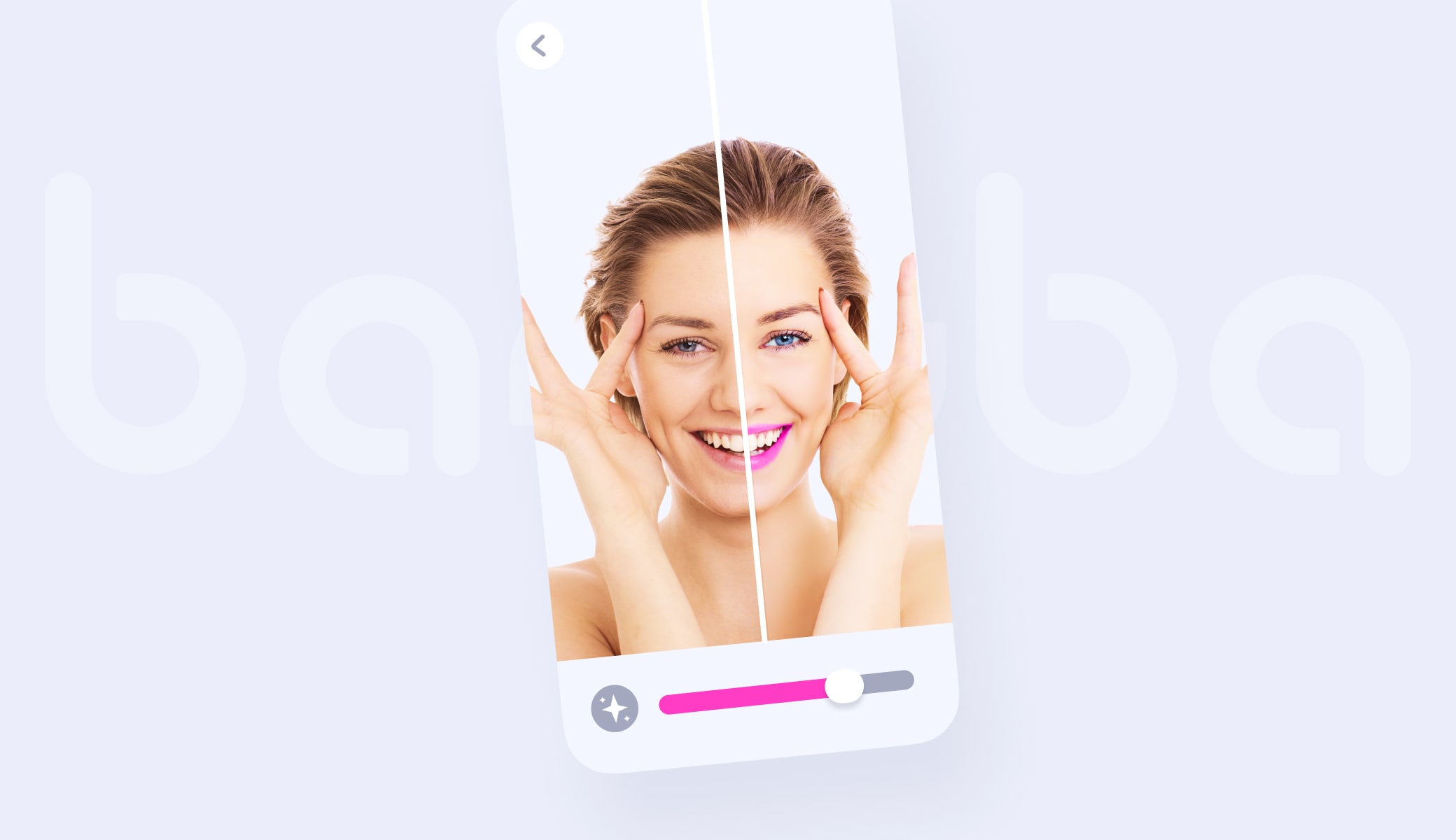



 Makeup try-on from Looke
Makeup try-on from Looke
